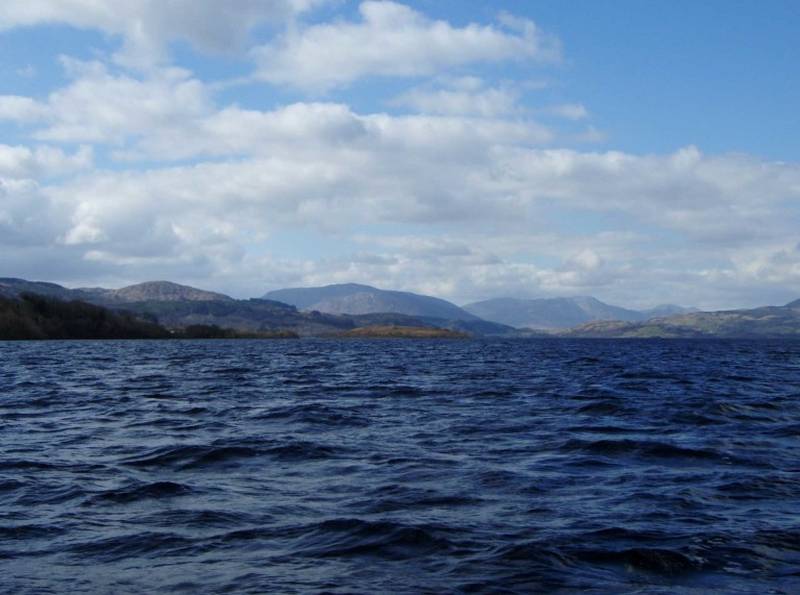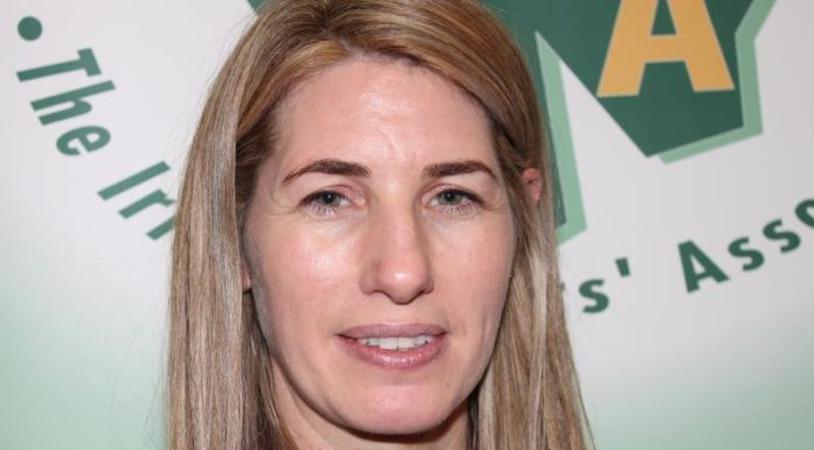Connacht Tribune
Anglers seek buffer zone to protect trout and salmon

Trout anglers have demanded the introduction of a two kilometre buffer-zone on Lough Corrib to protect salmonid species from predatory pike, an invasive species.
And local fishermen have reiterated their call for the Corrib to be designated as a wild salmonid fishery, to be managed primarily for the benefit of trout and salmon.
Oughterard Anglers and Boatmen Association (OABA) said its position about the need for pike to be controlled hasn’t changed since the publication of new research by Inland Fisheries Ireland (IFI) about diet preferences of pike.
The research, referred to as ‘McLoone’, examines whether pike and brown trout can co-exist in the same habitat. Using statistical models, it found that pike and brown trout could live together within relatively large deep lakes with strong stream connectivity. However in small, low-complex systems pike introductions could potentially have a devastating impact on resident brown trout populations.
The practice of pike removal and the impact it has on brown trout stocks was also examined. The findings, according to IFI, suggest that pike removal may only be effective in protecting brown trout populations in systems where trout are the only available prey but may have little effect in systems where other prey, such as roach, is available.
Mike Donnellan, spokesperson for Oughterard Anglers, said their stance on pike hasn’t changed.
“Pike controls are definitely required. There is no doubt about it, we 100% need to control pike or else salmon and trout could be wiped out,” he said.
The McLoone report suggested that in large, deep lakes, of 600 hectares or more, there is no need for pike controls.
Mr Donnellan dismissed this as a “hypothesis” and a “mathematical formula”. “It’s never been tried and tested,” he said.
The research relates to Lake Windermere in England, where 13.6% of the lake is shallow and less than two metres, the potential poke spawning area.
However, on the lower Corrib – around Moycullen, Claregalway, Headford – 46.4% of the lake is less than two metres. The potential pike spawning area of the upper lake (less than two metres) – Oughterard, Cong, Corr na Mona, Glencorrib – is 22.7%.
“It’s comparing apples with oranges. The potential spawning area for pike in the Corrib, particularly the shallower south lake, is huge and that proves that we need to control predatory pike there,” he said.
Mr Donnellan also pointed to scientific research conducted on Lough Erne, in Northern Ireland, ‘Migration and survival of Atlantic salmon Salmo salar smolts in a large natural lake’ which showed pike predation levels of between 32% and 54% on juvenile salmon entering systems. Published in the Journal of Fish Biology, it was commissioned by IFI, ESB and Agri-Food and Biosciences Institute, Belfast.
It found that pike prey on salmon smolts as they enter the lake through tributary systems, and it backs anglers call for a two-kilometre pike control buffer zone.
Mr Donnellan pointed out that IFI was spending €1.1 million on the Owenriff catchment in Connemara, the most important spawning and tributary nurseries for the Corrib, to rehabilitate the fish salmonoid stock, which has been devastated since the introduction of pike.
“What’s the point in spending all that money if you’re not going to control pike in the Corrib? What will happen is you rehabilitate juvenile salmonids on Owenriff but as soon as they enter the Corrib at Oughterard they get clipped by predatory pike. That doesn’t make sense. We need pike controls otherwise they’ll eat all the juvenile salmon and trout,” he said.
Speaking about the pike diet research, CEO of IFI, Ciaran Byrne, said: “This research was initiated to answer some on-going questions relating to the dietary preference of pike and the pike-brown trout interactions in lakes across Ireland. Previous studies in this area were carried out more than 50 years ago which is a long time within our changing lake systems.
“This research is important as it gives an insight into the behaviour of the pike species and provides updated information around their relationship with brown trout. The changing food web and altered preferences of predators in the water systems highlights the need for continued monitoring and updated data to inform effective management strategies.
“This research will now be considered alongside the many historic, socio economic and management factors which all inform fisheries management and development work. Inland Fisheries Ireland uses the best available scientific information to underpin management decision making and advice.”
Connacht Tribune
West has lower cancer survival rates than rest

Significant state investment is required to address ‘shocking’ inequalities that leave cancer patients in the West at greater risk of succumbing to the disease.
A meeting of Regional Health Forum West heard that survival rates for breast, lung and colorectal cancers than the national average, and with the most deprived quintile of the population, the West’s residents faced poorer outcomes from a cancer diagnosis.
For breast cancer patients, the five-year survival rate was 80% in the West versus 85% nationally; for lung cancer patients it was 16.7% in the west against a 19.5% national survival rate; and in the West’s colorectal cancer patients, there was a 62.6% survival rate where the national average was 63.1%.
These startling statistics were provided in answer to a question from Ballinasloe-based Cllr Evelyn Parsons (Ind) who said it was yet another reminder that cancer treatment infrastructure in the West was in dire need of improvement.
“The situation is pretty stark. In the Western Regional Health Forum area, we have the highest incidence of deprivation and the highest health inequalities because of that – we have the highest incidences of cancer nationally because of that,” said Cllr Parsons, who is also a general practitioner.
In details provided by CEO of Saolta Health Care Group, which operates Galway’s hospitals, it was stated that a number of factors were impacting on patient outcomes.
Get the full story in this week’s Connacht Tribune, on sale in shops now, or you can download the digital edition from www.connachttribune.ie. You can also download our Connacht Tribune App from Apple’s App Store or get the Android Version from Google Play.
Connacht Tribune
Galway minors continue to lay waste to all opponents

Galway 3-18
Cork 1-10
NEW setting; new opposition; new challenge. It made no difference to the Galway minor hurlers as they chalked up a remarkable sixth consecutive double digits championship victory at Semple Stadium on Saturday.
The final scoreline in Thurles may have been a little harsh on Cork, but there was no doubting Galway’s overall superiority in setting up only a second-ever All-Ireland showdown against Clare at the same venue on Sunday week.
Having claimed an historic Leinster title the previous weekend, Galway took a while to get going against the Rebels and also endured their first period in a match in which they were heavily outscored, but still the boys in maroon roll on.
Beating a decent Cork outfit by 14 points sums up how formidable Galway are. No team has managed to lay a glove on them so far, and though Clare might ask them questions other challengers haven’t, they are going to have to find significant improvement on their semi-final win over 14-man Kilkenny to pull off a final upset.
Galway just aren’t winning their matches; they are overpowering the teams which have stood in their way. Their level of consistency is admirable for young players starting off on the inter-county journey, while the team’s temperament appears to be bombproof, no matter what is thrown at them.
Having romped through Leinster, Galway should have been a bit rattled by being only level (0-4 each) after 20 minutes and being a little fortunate not to have been behind; or when Cork stormed out of the blocks at the start of the second half by hitting 1-4 to just a solitary point in reply, but there was never any trace of panic in their ranks.
For more, read this week’s Connacht Tribune.
Connacht Tribune Digital Edition App
Download the Connacht Tribune Digital Edition App to access to Galway’s best-selling newspaper.
Click HERE to download it for iPhone and iPad from Apple’s App Store, or HERE to get the Android Version from Google Play.
Or purchase the Digital Edition for PC, Mac or Laptop from Pagesuite HERE.
Get the Connacht Tribune Live app
The Connacht Tribune Live app is the home of everything that is happening in Galway City and county. It’s completely FREE and features all the latest news, sport and information on what’s on in your area. Click HERE to download it for iPhone and iPad from Apple’s App Store, or HERE to get the Android Version from Google Play.
Connacht Tribune
Gardaí and IFA issue a joint appeal on summer road safety

GARDAÍ and the IFA have issued a joint appeal to all road users to take extra care as the silage season gets under way across the country.
Silage harvesting started in many parts of Galway last week – and over the coming month, the sight of tractors and trailers on rural roads will be getting far more frequent.
Inspector Conor Madden, who is in charge of Galway Roads Policing, told the Farming Tribune that a bit of extra care and common-sense from all road users would go a long way towards preventing serious collisions on roads this summer.
“One thing I would ask farmers and contractors to consider is to try and get more experienced drivers working for them.
“Tractors have got faster and bigger – and they are also towing heavy loads of silage – so care and experience are a great help in terms of accident prevention,” Inspector Madden told the Farming Tribune.
He said that tractor drivers should always be aware of traffic building up behind them and to pull in and let these vehicles pass, where it was safe to do so.
“By the same token, other road users should always exercise extra care; drive that bit slower; and ‘pull in’ that bit more, when meeting tractors and heavy machinery.
“We all want to see everyone enjoying a safe summer on our roads – that extra bit of care, and consideration for other roads users can make a huge difference,” said Conor Madden.
He also advised motorists and tractor drivers to be acutely aware of pedestrians and cyclists on the roads during the summer season when more people would be out walking and cycling on the roads.
The IFA has also joined in on the road safety appeal with Galway IFA Farm Family and Social Affairs Chair Teresa Roche asking all road users to exercise that extra bit of care and caution.
“We are renewing our annual appeal for motorists to be on the look out for tractors, trailers and other agricultural machinery exiting from fields and farmyards,” she said.
For more, read this week’s Connacht Tribune.
Connacht Tribune Digital Edition App
Download the Connacht Tribune Digital Edition App to access to Galway’s best-selling newspaper.
Click HERE to download it for iPhone and iPad from Apple’s App Store, or HERE to get the Android Version from Google Play.
Or purchase the Digital Edition for PC, Mac or Laptop from Pagesuite HERE.
Get the Connacht Tribune Live app
The Connacht Tribune Live app is the home of everything that is happening in Galway City and county. It’s completely FREE and features all the latest news, sport and information on what’s on in your area. Click HERE to download it for iPhone and iPad from Apple’s App Store, or HERE to get the Android Version from Google Play.












